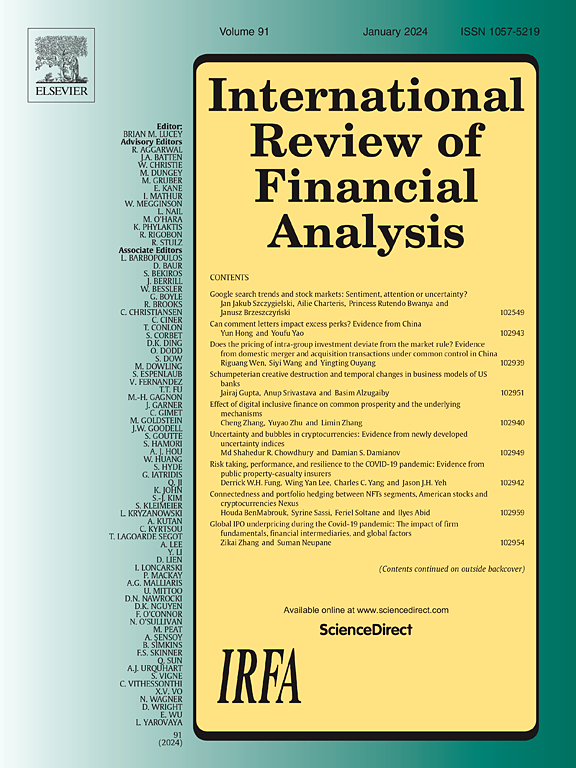自动编码器资产定价模型和经济限制-国际证据
IF 9.8
1区 经济学
Q1 BUSINESS, FINANCE
引用次数: 0
摘要
我们评估了Gu等人(2021)在美国和国际数据集上的条件自编码器(CAE)模型的性能,考虑了经济约束,如排除微市值和非流动性公司以及包含交易成本。CAE模型通过联合估计潜在因素和条件贝塔来捕获收益与企业特征之间的非线性关系,同时强制执行无套利条件。最初的研究表明,从统计和经济的角度来看,在美国的情况下,样本外定价错误显著减少。我们在原始的美国数据集上验证了这些发现,并表明该模型可以很好地推广到具有更广泛公司特征集的美国数据集和国际市场。当引入经济约束时,投资组合的盈利能力大幅下降。在交易成本之前,从全样品转向液体样品的盈利能力下降了60%-85%。然而,除去成本,只有流动性策略仍然有利可图。特别是,在所有数据集上,只有在流动性样本上只做多的策略表现持续优于市场基准,在等额加权和价值加权投资组合中,夏普比率都在0.65至0.78之间。总的来说,研究结果强调了CAE模型在现实市场摩擦下的局限性和实践潜力。本文章由计算机程序翻译,如有差异,请以英文原文为准。
Autoencoder asset pricing models and economic restrictions — international evidence
We evaluate the performance of the Conditional Autoencoder (CAE) model by Gu et al. (2021) across U.S. and international datasets, considering economic constraints such as the exclusion of microcap and illiquid firms and the inclusion of transaction costs. The CAE model captures nonlinear relationships between returns and firm characteristics by jointly estimating latent factors and conditional betas while enforcing the no-arbitrage condition. The original study demonstrated significant reductions in out-of-sample pricing errors from both statistical and economic perspectives in the U.S. context. We validate these findings on the original U.S. dataset and show that the model generalises well to a U.S. dataset with a broader set of firm characteristics and to international markets. When economic constraints are introduced, portfolio profitability declines substantially. Profitability drops by 60%–85% when shifting from the full sample to the liquid sample before trading costs. However, after costs, only the liquid strategies remain profitable. In particular, long-only strategies on the liquid sample are the only ones to consistently outperform market benchmarks across all datasets, achieving Sharpe ratios between 0.65 and 0.78 for both equal- and value-weighted portfolios. Overall, the findings underscore both the limitations and the practical potential of the CAE model under realistic market frictions.
求助全文
通过发布文献求助,成功后即可免费获取论文全文。
去求助
来源期刊

International Review of Financial Analysis
BUSINESS, FINANCE-
CiteScore
10.30
自引率
9.80%
发文量
366
期刊介绍:
The International Review of Financial Analysis (IRFA) is an impartial refereed journal designed to serve as a platform for high-quality financial research. It welcomes a diverse range of financial research topics and maintains an unbiased selection process. While not limited to U.S.-centric subjects, IRFA, as its title suggests, is open to valuable research contributions from around the world.
 求助内容:
求助内容: 应助结果提醒方式:
应助结果提醒方式:


